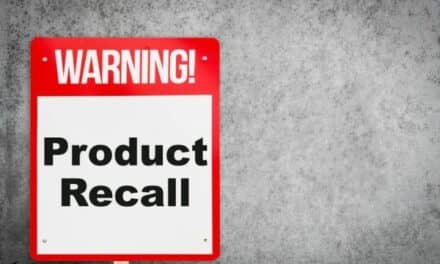 |
Data Quality Management (DQM) is the newest name for a process that has been around for a very long time. DQM is a technique for authenticating, maintaining, and disseminating accurate, comprehensive data vital in medical equipment inventories and for quality control administration. I label DQM as a simple mathematical equation: Garbage in equals garbage out. So, if you have poor data—such as missing or erroneous information—inside your database, then poor department management decisions will most likely result. According to the Data Warehousing Institute,1 Renton, Wash, poor data quality costs American businesses $6 billion per annum. Data quality policies and initiatives help prevent liability issues and legalities resulting from overall poor documentation habits. The clinical engineering data within the computerized maintenance management system (CMMS) historical database must be accurate and secure, and it can be inspected by The Joint Commission team using the system’s tracer methodology that can lead the team back to the medical device historical record. The data required establishes an accurate, maintainable, historical, automated record catalog for basic medical equipment management to include nomenclature, manufacturer, nameplate model, serial number, acquisition cost, condition code, and maintenance assessment, defined as follows:
- Nomenclature: Identifies what the med- ical device is, how, and the type of main- tenance to be completed.
- Manufacturer: The name of the com- pany that received aproval from the FDA to sell the device, also known as the original equipment man- ufacturer (OEM).
- Nameplate Model: The model number is typically on a face- plate located in front of or be- hind the device, or on the cover of the service manual provided by the OEM. As an example, the Med- tronic PhysioControl Lifepak 10 de- fibrillator is often mislabeled LifePak 10 and should actually be labeled in the system as one of the following: 10– 41, 10–43, 10–47, 10–51, or 10–57.
- Serial Number: This is usually found on the faceplate too. It is a consecutive number (could contain alpha charac- ters) provided by the OEM. This num- ber is crucial to device alerts and haz- ard recall identification.
- Acquisition Cost: The total purchase price for an individual equipment item or system, including installation, ship ping, and other associated costs. This number is crucial for budgeting, main- tenance expenditures, and depreciation reporting.
- Condition Code: This code is used mainly when an item is turned in (de- commissioned) and should be changed when there are major changes to the device that could affect whether or not an item should be salvaged, destroyed, or used by another organization.
- Maintenance Assessment: This as sessment must be validated every time a BMET performs any kind of main- tenance on a device. This provides justification for equipment replace- ment when the 3-year replacement plan is periodically reviewed by man- agement.
Other useful data include warranty, location, other service contractor agencies, scheduled maintenance due dates, and intervals. These fields are very important to ensure proper maintenance is being performed, equipment is properly accounted for, and devices are safe for use in the health care organization. Avoiding the most important error—missing/erroneous data—all starts by properly inputting the equipment data into your CMMS. Things that management and technicians should be looking out for are devices that do not have standardized data or have missing data. For instance, running a report of all the defibrillator devices in the hospital shows 10 out of 30 defibrillators with the same model, which appear to be mislabeled. For example, five say Zoll, two say Zoll Med, two others say Zoll Medical, and one says Z Med. In fact, the CMMS should have the same OEM name for all 30 defibrillators. How do you know which OEM name is right? I recommend using ECRI Institute’s Universal Medical Device Nomenclature System’s device index to properly identify those medical devices to match your CMMS inventory. I have toured hospitals and clinics, and in these clinical engineering databases I have seen four different kinds of model numbers when the CMMS should only have one model number loaded.
For DQM to be successful it is really a team effort and also knowing that documentation and attention to detail are now as important as repairing equipment. This data is used within facilities to monitor performance-improvement efforts and to improve outcomes. There is a new conduit of attaching RFID devices to track these items for you, but for some it is not cost effective. Lastly, the DQM model of accuracy, accessibility, comprehensiveness, consistency, and being up-to-date should have management oversight, a benchmark tracking method, and all discrepancies must be corrected in a timely manner.
Christopher J. Correll, TSGT, USAF, CBET, NCOIC, is an assistant facility manager in clinical engineering at Pope Air Force Base, NC. For more information, contact .
Reference
- Eckerson WW. Excerpt from TDWI’s Research Report—”Data Quality and the Bottom Line.” Business Intelligence Journal. www.tdwi.org/research/display.aspx?ID=6589. Accessed October 26, 2009.
What’s on Your Mind?Got a gripe? A recommendation? Does someone or something deserve praise? Share your opinions and insights with your peers. Soapbox columns should be 800 to 850 words in length and can be e-mailed to . |




